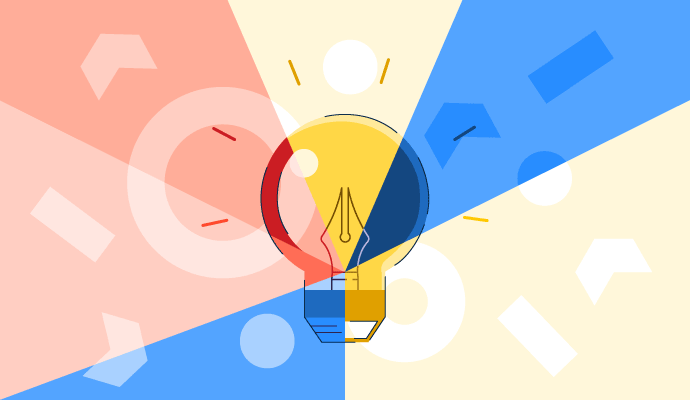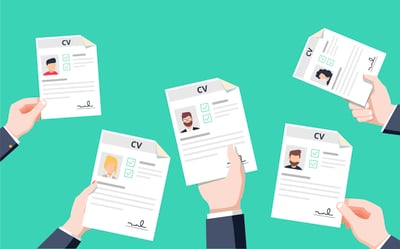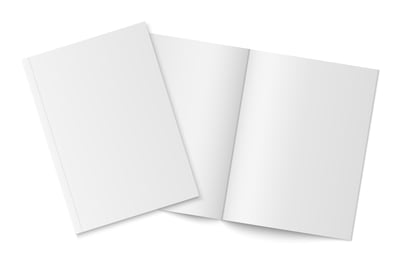September 18, 2025
 by Soundarya Jayaraman / September 18, 2025
by Soundarya Jayaraman / September 18, 2025

I still remember scrolling through my feed last year and realizing how fast the visual world was shifting, gradients got bolder, typography broke the rules, and suddenly, AI-powered visuals were everywhere. What once took hours in Photoshop was now happening in seconds with AI tools like Canva’s Magic Studio, Adobe Firefly, and Figma’s new AI features.
That’s why I’ve pulled together the biggest graphic design trends shaping 2026. Whether you’re a designer refining your portfolio, a marketer refreshing your brand identity, or a product team building the next big SaaS experience, these trends aren’t just eye candy; they’re powered by the very tools transforming how we all create.
In this article, you’ll get a clear, insider’s look at the styles, colors, and techniques defining visual storytelling this year, plus actionable tips on how to harness both traditional and AI-driven design platforms to stand out.
Design styles don’t just evolve slowly anymore; they explode. Apple’s new Liquid Glass aesthetic went from a niche effect in concept shots to a system-wide look across iOS and macOS in under a year. At the same time, AI-generated visuals have leapt from experimental Midjourney posts to polished assets in mainstream campaigns and SaaS dashboards.
That’s how quickly a look can jump from fringe to mainstream and how fast customers start expecting it. In 2026, design isn’t just about aesthetics; it’s about staying relevant in an AI-accelerated marketplace. With tools like Adobe Firefly, Figma AI, and Canva Magic Studio shrinking production cycles, brands can test and roll out new looks in weeks instead of months. The teams that recognize and act on trends first often set the tone for everyone else.
This year’s visual landscape is shaped by speed, experimentation, and technology. Designers aren’t just following aesthetics, they’re blending bold ideas with new tools to create experiences that feel fresh and intuitive. The trends below show how color, motion, and AI-driven creativity are redefining what stands out in the upcoming days.
| Trend | What it is | Why it stands out |
| Bold and maximalist color palettes | Saturated hues, unexpected pairings, and layered gradients paired with clean layouts | Breaks through visual noise while keeping interfaces usable |
| AI-generated visuals at scale | AI models create on-brand imagery, concept art, and social assets | Lowers barriers, speeds production |
| Motion-driven typography and micro-animation | Animated headers, kinetic text, and subtle micro-interactions | Guides the eye and adds a premium feel without clutter |
| Sustainability-inspired design | Earthy tones, organic textures, and minimalist packaging | Signals environmental responsibility authentically |
| Mixed-media and collage aesthetics | Combining photography, 3D, illustration, and AI elements | Creates tactile, unexpected visuals in digital spaces |
| Organic and fluid shapes | Blobs, waves, and undulating edges replacing rigid grids | Adds a human, playful feel to digital layouts |
| Retro and nostalgia mashups | 80s–2000s fonts, textures, and colors blended with modern layouts | Taps cultural memory while staying current |
| Serif fonts | High-contrast serifs for headlines and navigation | Adds sophistication and heritage to minimal layouts |
| Handcrafted and imperfect design elements | Sketchy icons, doodles, and textured backgrounds | Counterbalances polished AI visuals with authenticity |
After years of muted tones, soft gradients, and minimalist layouts dominating digital spaces, bold color is back in full force. Designers are moving beyond “safe” neutrals into rich, saturated palettes, unexpected color pairings, and multi-layered gradients to break through the noise of crowded feeds and interfaces, and pairing them with clean, minimal layouts so interfaces stay usable.
It’s not about clutter; it’s about turning up the volume on color while keeping structure simple. Think vibrant duotones on generous white space or high-saturation accents on a minimalist dashboard.
Spotify’s annual Wrapped campaign is a masterclass in bold color done right. The 2026 edition ditched the muted pastels of previous years for electric gradients. think neon magenta melting into acid green, layered over deep charcoal and black backgrounds.

This high-contrast approach made the data visualizations feel energetic and modern without overwhelming users. By pairing maximalist colors with a simple, card-based layout, Spotify managed to keep the interface clean, legible, and on-brand while still commanding attention across social feeds.
What started as designers experimenting with Midjourney prompts has turned into a mainstream workflow. Since 2024, creative teams are using AI to generate on-brand imagery, concept art, social assets, and even interface elements, then refining them in their design suites. It’s not just moodboards anymore; it’s production-ready visuals created in hours instead of weeks.
Tools like ChatGPT, now widely used to script and ideate creative concepts, and Nano Banana, which lets you tweak style, composition, and color directly in the app, make high-quality visual generation almost as fast as writing a prompt. What used to require a trained professional can now be produced, refined, and iterated by non-designers in a single afternoon, dramatically lowering the barrier to professional-looking creative work.

This new speed also raises thorny questions about originality and consent. When everyone “ghiblified” their profile pictures last year with an AI filter, it sparked a conversation about style appropriation and whether artists’ work was being used to train models without permission. That same tension now surrounds brands using AI to produce commercial visuals. The debate isn’t just academic:
For designers, the path forward isn’t to avoid AI altogether but to use it transparently and ethically. That means checking license terms of the tools you use, crediting or compensating artists when possible, and treating AI-generated assets as a starting point to be customized rather than a finished product you simply drop into a campaign. Doing so keeps your work fresh, speeds up production, and helps your brand stay on the right side of both the law and public opinion.
Typography is no longer static. Designers are bringing text to life with kinetic effects, animated headers, and subtle micro-interactions across websites and apps.
Letters stretch, bounce, or dissolve as you scroll; headlines fade in and out with motion cues; even data visualizations now use animated labels. Done well, these touches guide the eye, communicate hierarchy, and make an interface feel more premium without overwhelming users.
Apple’s new Liquid Glass design language shows how motion can reinforce clarity rather than distract. In its latest iOS interfaces, headlines glide smoothly into place while translucent panels subtly shift and blur as you scroll. The motion isn’t just decorative; it signals context changes, makes depth and layering intuitive, and gives the interface a tactile feel.
Designers outside Apple are already borrowing this approach, combining minimal layouts with kinetic type or animated micro-interactions to make otherwise static pages feel dynamic and memorable.
With climate consciousness becoming a mainstream value for quite sometime now, brands are weaving sustainability cues directly into their visual identities. This doesn’t just mean “eco” stock photos; it shows up in muted earth tones, organic textures, recycled or biodegradable packaging, and interfaces that feel softer and more natural. Designers are also making bolder choices around minimal material usage in print and digital assets to signal environmental responsibility without sacrificing aesthetics.
Patagonia’s website and campaign materials are a case study in sustainability-inspired design. Instead of glossy, high-contrast visuals, its refreshed site uses warm, earthy color palettes and grainy textures reminiscent of natural fibers.

Hero images are shot with ambient lighting rather than artificial gloss, and UI elements are stripped back to reduce visual clutter, all reinforcing the brand’s eco-driven mission. Even in its e-commerce experience, micro-interactions are slowed slightly to create a “considered” feel, echoing the idea of thoughtful consumption. This approach shows how sustainability can be communicated through design choices that feel authentic, not gimmicky.
Designers are blending multiple mediums like photography, 3D renders, hand-drawn illustrations, and even AI-generated elements, into a single composition to create visuals that feel tactile and unexpected.
 Mixed media template from Canva
Mixed media template from Canva
Rather than flat hero images, many layouts now play with cut-outs, torn paper textures, painterly strokes, mixed lighting, and whimsical overlays for depth and visual interest.
This mixed-media look signals originality and helps a campaign stand out in a sea of polished, uniform assets. It lets brands evoke human, crafted, and artistic qualities while still using modern tools and techniques.
After years of strict grids, crisp rectangles, and uniform card layouts, we're seeing a surge of organic, free-flowing forms. Designers are introducing blobs, waves, irregular outlines, and soft, undulating edges to replace rigid geometry. These shapes feel more human, playful, and tactile — a counterbalance to the highly digital, AI-driven look dominating much of the visual landscape.
Instead of boxes, hero sections may use curved panels; buttons take on pill-like silhouettes; backgrounds feature amorphous color washes or subtle liquid animations. Combined with clean typography and plenty of space, these organic shapes break monotony and make interfaces feel approachable and alive.
Many new SaaS landing pages are replacing sharp-edged banners with flowing, blob-like gradients behind their headlines, creating a sense of movement and warmth while keeping the layout functional. The effect is subtle but instantly differentiates them from the boxy templates of past years.

For example, this website for Madar has a bold and dynamic hero section with sweeping curves and shaded gradients behind the headline and navigation area to highlight their business.
After years of sleek, futuristic interfaces, we're now seeing a wave of throwback design. Brands are borrowing cues from the ’80s, ’90s, and early 2000s, grainy textures, pixelated icons, neon accents, chrome gradients, and vintage typefaces, but blending them with contemporary layouts and digital polish. This mashup of old and new feels fresh because it taps into cultural memory while still looking modern.

Instead of full-on “retro” sites, many designers are using nostalgic elements sparingly: retro serif or pixel fonts for headlines, sticker-style graphics layered on minimal layouts, or VHS-like grain filters on product shots. The result is a design that feels playful and familiar but still functional and up-to-date.
After years of sans-serif dominance in digital interfaces, serif typefaces are making a quiet return in recent years. Brands are embracing elegant, high-contrast serifs for headlines, subheads, and even navigation to convey sophistication and trust. Modern variable serif fonts scale beautifully on screens and adapt to different weights, so they don’t feel stodgy or old-fashioned. This resurgence signals a desire for more personality and heritage in otherwise minimal, tech-forward layouts.
Saint Laurent is part of what design observers are calling a serif revival. While its core logo remains in a clean sans-serif (Helvetica Neue Bold), there are reports that the brand is increasingly using serif-style type in some campaigns and typographic treatments.
Another trend rising, in contrast, probably in response to the polished precision of AI-generated visuals, is a rise in hand-drawn, textured, and deliberately “imperfect” design touches. Designers are adding sketchy icons, irregular brush strokes, doodles, or tactile paper textures to give digital products a human, crafted feel.
These elements act as a counterbalance to machine-generated content, making brands seem more approachable and authentic.
The rapid evolution of mainstream design tools is one of the biggest forces behind the visual shifts we're seeing today. Platforms like Adobe Creative Cloud, Canva, Figma, and Affinity now bundle AI features that were once separate add-ons. Automatic background removal, generative fill, style transfer, smart color palette suggestions, and real-time collaboration are no longer experimental; they’re built into the workflows creative teams use every day. On top of that, powerful AI models and image generators, from Adobe Firefly to Midjourney and Stable Diffusion, are becoming part of designers’ daily toolkits rather than novelty apps.
This integration makes trends spread faster. As soon as a new style takes off, toolkits roll out presets, plug-ins, and templates that let even non-designers try it instantly. Features like Canva’s Magic Studio or Adobe Firefly mean a single prompt can produce multiple layout variations, saving days of work. The result is a level playing field: small teams can deliver polished, trend-forward visuals at a speed and cost that used to be reserved for big agencies.
For creative teams, this means speed, cost savings, and accessibility. The gap between concept and execution is shrinking; iteration cycles are shorter; and teams can test, refine, and launch visuals with far less overhead.
The biggest opportunity hidden inside this year's design trends isn’t just a new look; it’s a new way of working. Bold colors, kinetic type, and handcrafted touches are the surface signals of something deeper: teams moving from linear production cycles to continuous creative iteration. Instead of waiting for annual brand refreshes, designers are using AI tools and real-time feedback to prototype, test, and evolve their visuals in days. This shift makes creativity less of a one-off event and more of an ongoing conversation with your audience.
For marketers and designers, that means the real competitive edge isn’t adopting every trend. Trends are signals, not instructions. Use them to spark ideas, not to replace your voice. That means asking “how can this serve my audience or project?” instead of “how can I copy this look fastest?”
By approaching trends as ingredients rather than rules, you’ll build a visual language that feels fresh but also recognisably yours. AI tools and design platforms can make execution faster and cheaper, but your perspective, taste, and judgment are what turn a passing style into meaningful work. When you lean into that mindset, you stop racing to keep up and start setting the pace.
Ready to make your creative practice more agile? Explore G2’s vector graphics software category to compare platforms, read real user reviews, and find the best fit for your next project.
This article was originally published in 2019. It has been updated with new information.
Soundarya Jayaraman is a Content Marketing Specialist at G2, focusing on cybersecurity. Formerly a reporter, Soundarya now covers the evolving cybersecurity landscape, how it affects businesses and individuals, and how technology can help. You can find her extensive writings on cloud security and zero-day attacks. When not writing, you can find her painting or reading.
There’s no doubt about it: graphic designer’s resumes can look awesome.
 by Daniella Alscher
by Daniella Alscher
Some may think that a cover letter isn't necessary for graphic design.
 by Daniella Alscher
by Daniella Alscher
Writing a summary of one thousand pages is hard enough – how are you supposed to summarize...
 by Daniella Alscher
by Daniella Alscher
Some may think that a cover letter isn't necessary for graphic design.
 by Daniella Alscher
by Daniella Alscher
There’s no doubt about it: graphic designer’s resumes can look awesome.
 by Daniella Alscher
by Daniella Alscher


